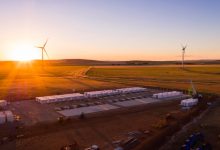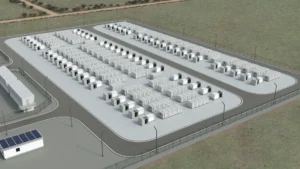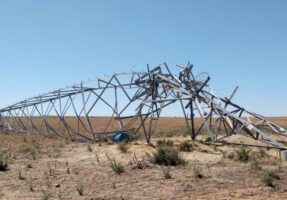Tesla, the world’s most successful electric vehicle company and battery storage developer, has called for a 20 gigawatt storage target as a means to ensure Australia has enough “dispatchable” power in place for the transition to a grid dominated by wind and solar.
The Tesla suggestion comes in a submission to the federal parliament’s standing committee’s inquiry into dispatchable energy generation and storage capability in Australia.
The inquiry has attracted dozens of submissions, from the market operator down through utilities, networks, storage providers, and the coal, gas and nuclear lobbies, but the Tesla submission is striking for its clarity and simplicity.
Tesla argues that there it is “no longer economically rational” for investors or governments to build new thermal coal or gas peaking plants to provide dispatchable energy in Australia, even though that is exactly what they have done and propose to do via support for projects like the Kurri Kurri gas project and new “capacity markets.”
Battery storage, on the other hand, offers fast, modular and scalable deployment profiles, and can be deployed in any location on the network, and compared to gas or pumped hydro projects, batteries have a minimal land footprint and a reduced carbon footprint.
One of the problems with battery storage, however, is that there are no rewards for many of the services that it can provide, because the market was designed for a different sort of grid, one dominated by centralised fossil fuel generation and is evolving slowly.
“Tesla is strongly supportive of an approach that rewards new technology projects over simply extending the life of existing assets or upgrades,” its submission says.
“Extending the life of ageing assets drives up prices for consumers relative to new assets that bring additional generation capacity and increase competition. Extensions and retrofits distort investment signals and inhibit jobs growth and energy affordability.
“As yet there are no overarching plans or direct mechanisms to ensure the scale of storage required is delivered to meet both reliability and system security outcomes in the short term, and drive affordability and efficiency outcomes for consumers over the longer term,” the company writes.
“Tesla recommends a clear storage target (e.g. 20GW by 2040) to enable progress tracking and guide reforms to unlock new value streams.”
This would also support the creation of new markets; and provide alternative payment mechanisms via dedicated grid-scale and VPP funds. It also wants regulatory barriers removed that prevent networks from installing batteries, even when the economic and other benefits are clear.
That 20GW of storage capacity – which would vary in terms of hours of storage depending on the need and technology – corresponds to the target identified by the Australian Energy Market Operator in its Integrated System Plan, its 20-year blueprint on how the grid would transition from fossil fuels to renewables.
Tesla says such a target would be particularly valuable over the next 5 to 10 years and could be facilitated through expanded funding to ARENA and CEFC to ensure research, development and deployment pathways continues.
It would also support the creation of new markets; and provide alternative payment mechanisms via dedicated grid-scale and VPP funds. It also wants regulatory barriers removed that prevent networks from installing batteries, even when the economic and other benefits are clear.
At the moment, the policy debate in Australia is locked over a proposal to introduce a form of capacity payments, in the form of a certificate scheme known as a “physical retailer reliability obligation” that virtually everyone in the industry argues would merely extend the life of ageing coal and gas generators.
The proposal is supported only by a small group of coal generation companies, and the federal energy minister Angus Taylor. Even state energy ministers have cast doubt on the idea and prefer a direct approach.
In NSW, which has a renewable infrastructure mandate, the state has effectively declared a storage target as it seeks 2GW of battery and pumped hydro storage as part of the rollout of its renewable energy zones.
Tesla has deployed more battery storage in Australia than any other company, and its operations – particularly at the first “Tesla big battery” at Hornsdale in South Australia has helped re-shape the thinking about a future grid.
Apart from the Hornsdale battery, its technology has been deployed at the Lake Bonney, Gannawarra and Bulgana big batteries, and at the Wallgrove big battery in NSW now under construction, and at the Victoria Big Battery, where commissioning was interrupted by a fire at two of its Megapack containers.
Tesla also notes that it had installed more than 200,000 Powerwall battery units across the globe by the first quarter of 2020, some of which are being used in “virtual power plants” in Australia, where their resources are aggregated to provide energy and grid services when needed.
“This is a promising start, but to meet the scale of future requirements, a clear target for 100% net zero emissions will underpin future investments and provide long-term investment certainty,” it says.
Tesla’s submission was made before the release of the ESB paper on the future design of electricity markets.
Note: This story has been updated to correct an erroneous claim about Powerwall unit sales made in the submission by Tesla.










